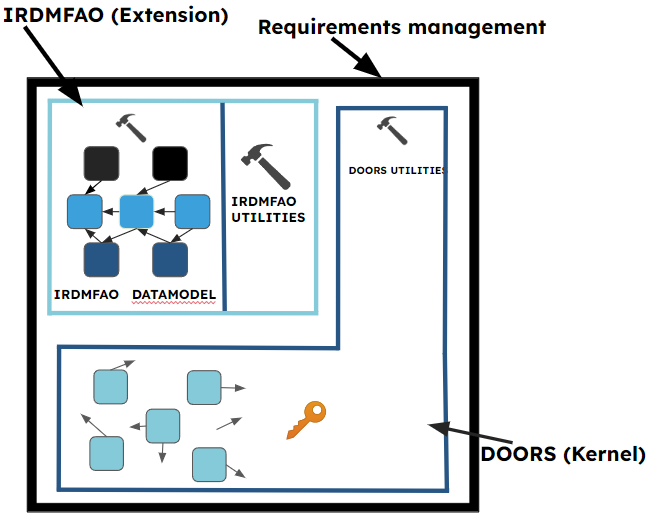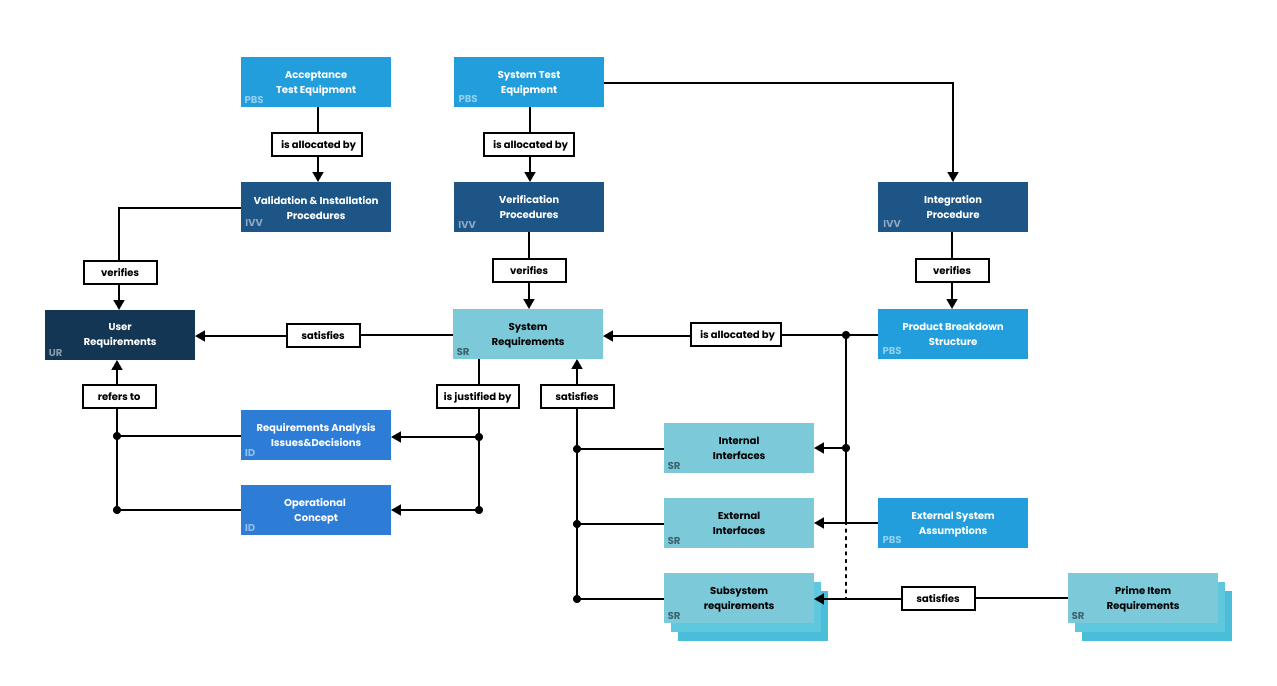Introduction
When it comes to achieving the goals you set, it is important to have the best tools for the job. If you are already using IBM® Rational® DOORS® or are considering using it, there exists something, which can elevate the experience of using IBM® Rational® DOORS® and allow you to further enhance its already impressive capabilities - IBM® Rational® DOORS® Requirements Management Framework Add-on (also referred to as IRDRMFAO).
Challenges
In this article you will learn about what challenges you might encounter while attaining or managing the highest possible level of process maturity and how you can easily overcome them thanks to IRDMFAO.
- Firstly you can encounter problems when it comes to adopting requirements processes and their execution, especially when they are very complex. This can be a particularly significant issue should all stakeholders be involved in the process.
- When large quantities of requirements need to be analysed, it can be quite a lengthy and difficult process, which is why it needs to be as well optimized as possible.
- Consistency can be another huge obstacle, since it’s difficult to maintain between multiple projects. However, it is crucial for success.
- You may need to reach compliance with ISO 15288 and EIA632 standards. This can prove to be quite problematic
- You can get to a point where your process data model has to be updated on the projects that you are currently working on.
Option to solve it
All of these challenges can add up to be quite a problem. Luckily, IBM® Rational® DOORS® Requirements Management Framework Add-on can help you with every single one. It is a solution, which has been created by industry experts for others in the industry, since it can be utilized by a variety of occupations, e.g. Software Engineers, Hardware Engineers, System Engineers and many more.
IRDMFAO is in its essence a requirements management add-on, a solution, whose primary aim it is to help you achieve peak time optimization through getting your project on track with a practice, which is one of the very best ones possible with DOORS. To add to that, IRDMFAO is engineered to help you reach compliance with EIA632 and ISO 15288 standards and CMMI recommendations. IRDRMFAO adds utilities, a process and a data model to DOORS.
However the most important thing is that all DOORS commands remain accessible for its users, because there is no interference with the DOORS layout.

1.) IRDMFAO and DOORS interaction visualisation
Preferred solutions
IRDMFAO provides you with several features, which help overcome the aforementioned challenges, firstly, a RMF Generic Data Model (RMF is an acronym which describes information handled by the product or an action performed by the product).
IRDMFAO comes up with a universal data model, however you are not limited to only using this one. As a matter of fact, you will be able to pick from an assortment of module types and relationships, which IRDMFAO provides.

2.) IRDMFAO modules relationships
n this example of a RMF model, every box serves as a module type (which serves the purpose of instantiating DOORS formal modules). There are also relationships (verifies, refers to…), which are provided by DOORS link modules and linksets.
In short, every action bolstered by the Requirements Management process handles particular elements of the data model and makes use of varying sorts of relationships and module types (also known as templates). For example, System requirements analysis makes use of UR,IDJ SR modules (UR - Users Requirements; IDJ - Issues & Decisions and Justifications; SR - System Requirements) and the “is justified by”, “satisfies”, “refers to” links.
IRDMFAO does not limit you in using a particular data model. It allows you to customize and adapt it for the needs of your project, since you can decide to only make use of some parts and then, if you see fit, continuously add more. This makes adopting requirements processes and their execution simpler and less time consuming, while also making updates to your data model more intuitive, improving efficiency and consistency in the process.
Regarding the analysis of requirements, IRDMFAO has you covered by implementing specialized facilities that will aid you with management of particularly important requirements, whether they are considered hazardous (Critical requirements) or they are especially important to the project (Key requirements). There are also those that fit into both categories. IRDMFAO offers you “Risk analysis” - a specialized view using which you can assign significance and closely observe the especially problematic requirements. Another dedicated view - “Key requirements list” - allows you to do the same with the requirements you deem to be essential for your project. This will allow you to analyze and work with large volumes of requirements requiring analysis and save you precious time while also making the whole process more efficient.
Last but not least, IRDMFAO provides its check project or module consistency tool to help you maintain peak consistency across your various projects and also modules. It is designed to serve as a precursor for a manual check, as it can notice errors and inconsistencies. You can either use it to monitor through collection of already defined rules or utilize the Integrity Check functionality, in which you can establish your own integrity rules.

3.) IRDMFAO rules overview
Specialized solutions. Approaches, tips
Now for a bit of an inside look, let’s inspect how IRDMFAO works. It enables you to instantaneously switch between two approaches that it uses. The first is the document approach, which you can utilize to view structured information (like chapters, sections, paragraphs) or reach a state of universal and continuous visualisation.
The second, database approach, allows you to define data using attributes and evaluate information, filter only the information that matters to you through filters and view traceability matrices.
To properly utilize the advantages that IRDMFAO offers, you will have to either create a new RMF project or transfer a DOORS project that already exists into a RMF project.
An important aspect of IRDMFAO is PUID (Project Unique Identifier). In its essence, it is used as a reference name of objects handled by the product (RMF objects), for example Requirements. There are two rules for this: firstly, two different objects should not have the same PUID values and secondly, the PUID should remain constant, meaning that even after change (editing the text or relocating the object) is done to it, the PUID should not change.
You do not have to do this manually (although you can), since you can allow IRDMFAO to manage the values automatically. This is another way that IRDMFAO makes your life easier.
Conclusion
All in all, IBM® Rational® DOORS® Requirements Management Framework Add-on (IRDMFAO) is an integrated collection of tools, which is immediately usable and upholds the very best practices used in the industry, in particular regarding systems engineering activities. It can help you maximize your potential by facilitating acceleration in adoption and enactment of requirements processes. Additionally, it guarantees compliance with EIA632 and ISO 15288 standards and SEI-CMM-I recommendations, can improve consistency and drastically simplify analysing huge amounts of requirements (and much more!).
Softacus Services
We, in Softacus, are experts when it comes to consulting and service delivery of IBM software products and solutions in your business. We help our clients to improve visibility and transparency when licensing and managing commercial software, providing measurable value while increasing efficiency and accountability and we are providing services in different areas (see Softacus Services).
IBM ELM extensions developed by Softacus are free of charge for the customers who ordered IBM ELM licenses via Softacus or for the customers who ordered any of our services. If you are interested in any of our IBM ELM extensions, you found a bug or you have any enhancement request, please let us know at info@softacus.com.
Related and Referenced Topics
Blog Articles:
Basics of Links and Link Types in IBM DOORS Next Generation - learn the basics about the linking and link types in IBM DOORS Next.
Linking Techniques in IBM DOORS Next - article explaining basic concepts and showing multiple ways of creation of links between artifacts.
Link By Attribute Feature in IBM DOORS Next - the article explains how to use the "Link by attribute" function to automatically create, update, or delete one or more links between artifacts based on values in the attributes of the artifact.
Softacus Widgets:
Link Switcher - widget developed by Softacus, that converts the context of artifacts links in a very short time.
Module Link Statistics - extension that provides users with a quick overview of the amount of the links in specific link types in a module.
Link Type Change- extension developed by Softacus designed to enhance the functionality of DOORS Next Generation by allowing users to manipulate the direction of a link or convert it to another type of link.
Links Builder- extension that allows the users to create a link between two artifacts in DOORS Next Generation according to the certain rules.
Link by Foreign Attribute - this extension allows users to create links between artifacts in the selected module(s), based on the attributes values.
Show Attributes of Linked Artifacts - this extension shows the attributes and links of the artifact that is currently selected.









